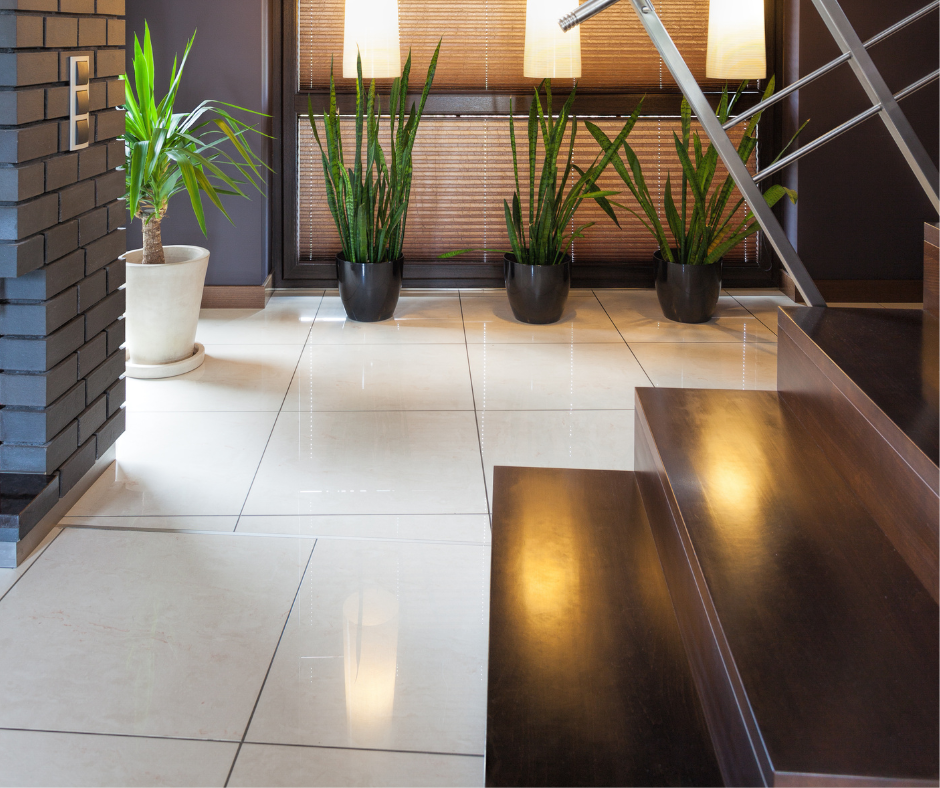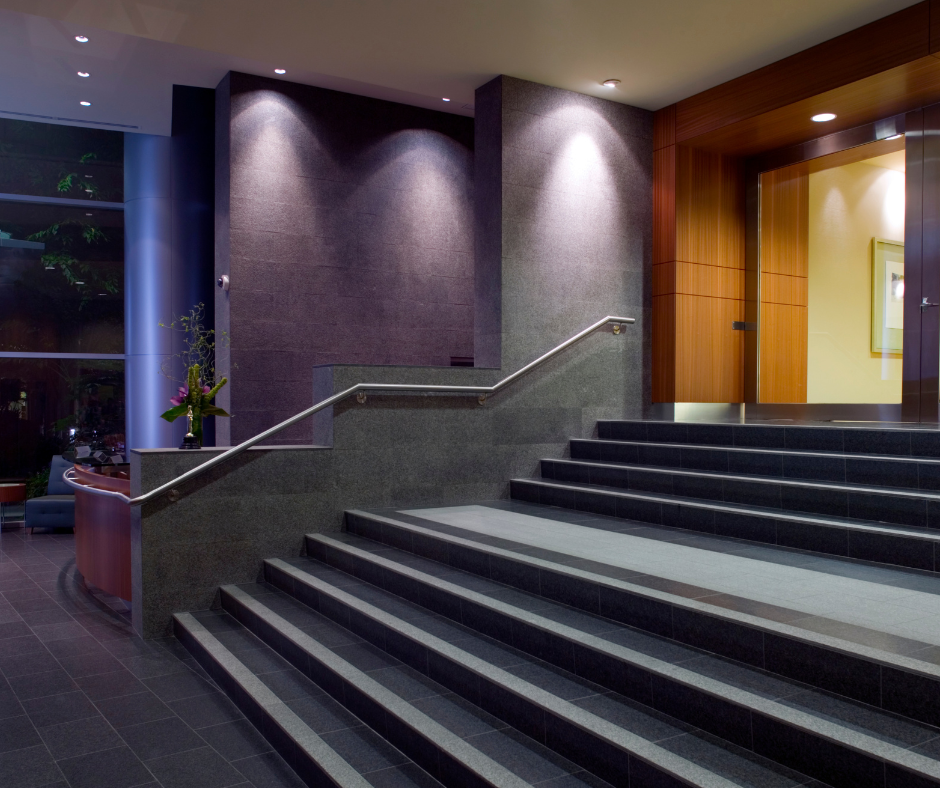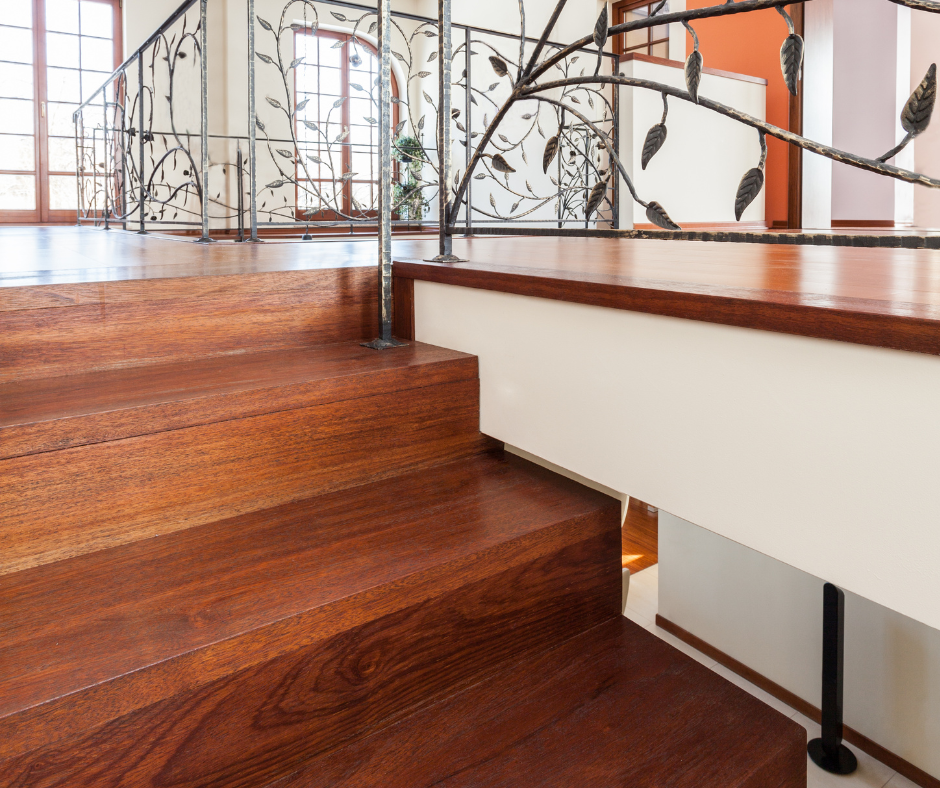Stairs might not be the first place you think about when it comes to safety and comfort—but they should be.
The stair tread maximum depth for residential homes is typically around 14 inches, as set by most building codes to ensure a safe and natural stride.
Understanding this, along with how carpet stair treads can enhance grip and comfort, is key to creating a staircase that’s both functional and beautiful.
In this guide, you’ll learn how to measure tread depth correctly, when to adjust it, and how to stay compliant with safety standards.
We’ll also show you practical ways to update your stairs with comfort-first solutions that still look polished.
Whether you're building new or upgrading old, every step will be smarter and safer
Understanding Stair Tread Dimensions
Stair design isn’t just about looks.
It’s about how each element works together to create safe, smooth movement.
There are two core parts to every stair step: the tread and the riser.
-
Tread: This is the flat, horizontal part where you step.
-
Riser: This is the vertical portion between each step.
The relationship between the two directly affects how comfortable your stairs are.
So, what is tread depth exactly?
It’s the distance from the front edge (nosing) of the stair to the back edge where it meets the riser behind it.
The more depth you have, the more foot support you get when walking up or down the stairs.
Too little tread, and you may not have enough space for your foot.
Too much, and you risk missteps or changes in pace—especially for those with shorter legs or reduced mobility.
Standard Stair Tread Depth for Homes
In residential homes, stair treads generally range from 9.5 to 11 inches in depth.
This sweet spot balances comfort, safety, and space efficiency.
-
9.5 inches is usually the minimum allowed by code.
-
10 inches is considered ideal for most standard homes.
-
11 inches offers even more room and may be seen in upscale homes or wider staircases.
It's not about going as deep as possible—it’s about what fits the space and how your stairs will be used.
What Is the Maximum Depth for a Stair Tread?
Now let’s talk about the upper limit.
The stair tread maximum depth typically falls around 14 inches, depending on your local building codes.
According to the International Residential Code (IRC) Section R311.7.5, tread depth must be at least 10 inches, while deeper dimensions may vary by jurisdiction.
While there’s usually a minimum depth set in stone, the maximum is a bit more flexible.
That said, deeper is not always better.
Here’s why:
-
Overly deep treads can disrupt walking rhythm.
-
They may require more stride length, which can be challenging for kids, pets, or older adults.
-
Too much variation between steps can increase tripping hazards.
So while you may want to upgrade your stairs for design or safety reasons, it’s smart to avoid going overboard.
Aim for something that meets code, fits the look you’re going for, and keeps movement feeling natural.
Why Building Codes Matter for Stair Design
Every beautiful staircase starts with safety.
That’s why building codes matter — they protect the people who use your stairs every day.
According to the International Residential Code (IRC) Section R311.7.5, the minimum stair tread depth is 10 inches, with many jurisdictions allowing up to 14 inches depending on layout.
The riser height—the vertical part between each step—must be between 7 and 8 inches.
Just as important, every step should be the same to avoid trip hazards and make stairs easy to use for everyone.
These standards aren't just about checking boxes — they help reduce falls, lower fatigue, and support natural movement up and down the stairs.
And if you plan to sell your home, compliant stairs can help you pass inspection and protect your investment.
How Stair Depth Impacts Everyday Living
A properly designed staircase feels almost invisible.
You move up and down without thinking twice.
But if the stair tread maximum depth is off, everything feels harder.
Here’s how it can affect daily life:
-
For families with kids: Smaller feet need a safe, level surface with just the right amount of depth to step confidently.
-
For older adults: Deeper treads paired with lower risers can ease joint strain and reduce fall risk.
-
For pet owners: Pets need secure footing too—slipping on shallow steps can lead to injuries.
So while depth is a building spec, it’s also a comfort issue.
And for homeowners with eye for design?
Getting the depth right means your stairwell won’t just work well—it’ll look stunning, too.
Extending Stair Tread Depth the Right Way
There are times when a staircase simply doesn’t cut it.
Maybe it’s a steep set of stairs from a previous remodel, or perhaps your family’s needs have changed.
That’s when extending stair tread depth becomes a smart upgrade.
Here are three ways to do it right:
1. Install Stair Tread Overlays
One of the easiest ways to change tread depth is by adding overlays.
Overlays are thin layers of material—often wood, laminate, or composite—that sit right on top of your existing treads.
They can be installed flush with the front of the stair or built out to create extra depth.
Bonus: overlays give you a new surface to finish or cover with something cozy, like Oak Valley’s carpet stair treads.
2. Replace the Entire Tread
For a full upgrade, consider removing your current treads and replacing them with new ones that are deeper.
This allows you to start fresh, customize the dimensions, and match materials or colors to your interior style.
Though more labor-intensive, it gives you full control over the stair’s function and appearance.
3. Build Out the Nosing
If you only need a little extra tread, another approach is adding a nosing extension—essentially attaching an additional piece of wood to the front edge of each step.
This small detail can make a big difference in usability without major construction.
Just be sure every step is exactly the same.
Uneven treads—even by half an inch—can become serious trip hazards.
Matching Your Tread Depth to Your Stairway Layout
Not all stairs are built the same.
The ideal stair tread maximum depth depends on the overall layout of your stairwell.
For example:
-
Straight staircases: You’ll want uniform tread depths and risers throughout.
-
Winder or curved stairs: These may have tighter space and require customized sizing to maintain safety.
-
Stairs with landings: You may have more room to use wider treads without crowding the area.
It’s a balance between available space and the natural stride of someone walking up or down.
This is where Oak Valley’s custom treads shine.
They allow you to tailor not just the size, but also the look and feel of every step.
Carpet Treads: A Simple Fix for Safety and Comfort
If your stair treads feel shallow or slippery, adding carpet stair treads is a low-commitment way to improve both safety and comfort.
They don’t change the structure of your stairs, but they do enhance how the stairs feel underfoot.
And since they can be customized to match your home’s look, you get beauty with the benefit.
Oak Valley’s carpet stair treads:
-
Are easy to install (no tools, nails, or damage)
-
Offer added traction and padding
-
Work with most tread sizes and depths
-
Help protect hardwood from wear and tear
They also help prevent slips for pets and give little ones a bit of cushion as they learn to navigate stairs.
Stair Tread Depth vs. Riser Height: Finding the Balance
A safe staircase is all about proportions.
The general rule?
As tread depth increases, riser height should decrease slightly.
This keeps the walking rhythm smooth and predictable.
Too deep with a high riser makes stairs tiring to climb.
Too shallow with a short riser feels cramped and awkward.
Follow this golden formula used by pros:
(2 x Riser Height) + Tread Depth = 24 to 25 inches
For example:
-
A 7-inch rise with a 10-inch tread = 24 inches (perfect)
-
An 8-inch rise with a 12-inch tread = 28 inches (too much)
This formula helps you check if your stairs are in balance—even if they look great at first glance.
How Oak Valley Makes It Easy
Upgrading or fixing your stairs doesn’t need to be a major renovation.
At Oak Valley Designs, we make stair solutions that are:
-
Stylish but functional
-
Custom but easy to install
-
Comfortable but code-friendly
Our DIY carpet stair treads are the perfect way to improve safety without replacing the entire stair.
Plus, our team is happy to help you get the measurements just right.
We even offer sample swatches, so you can feel the quality before you buy.
Stepping It Up
The right stair tread maximum depth isn’t just a number—it’s about creating a home that’s easier to move through, safer for everyone, and designed with care.
Whether you're starting from scratch or fixing what’s already there, every step counts.
And when you choose Oak Valley, you’re not just getting a product.
You’re getting family-owned craftsmanship, top-tier service, and stair solutions that make your home feel like home.
Want help picking the right tread for your stairs?
Make the most of every step.
Let’s build something beautiful together.
-
Website: https://oakvalleydesigns.com/
-
Phone: 706.331.0315
-
Email: info@oakvalleydesigns.com
-
Address: 30 River Ct SW Bldg E Cartersville, Ga 30120




